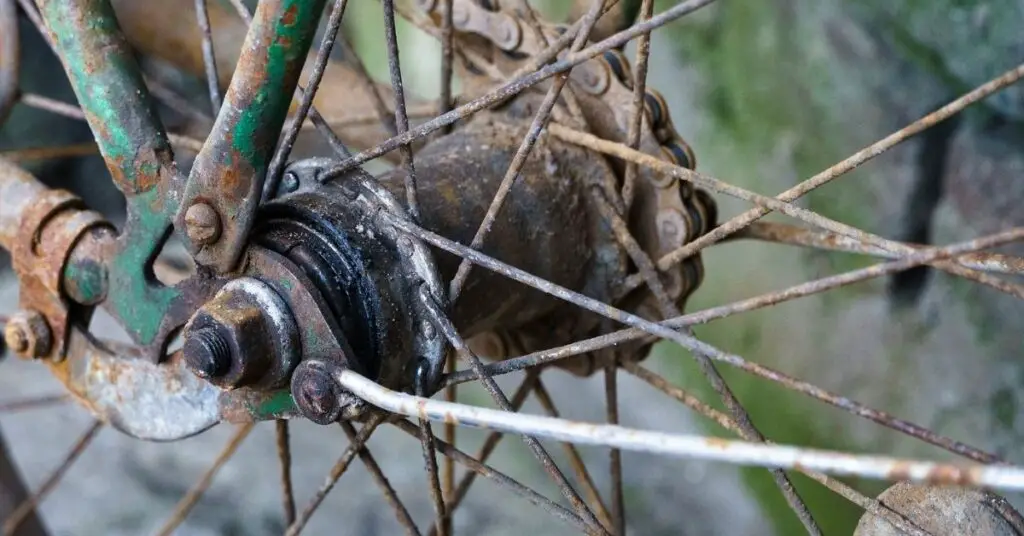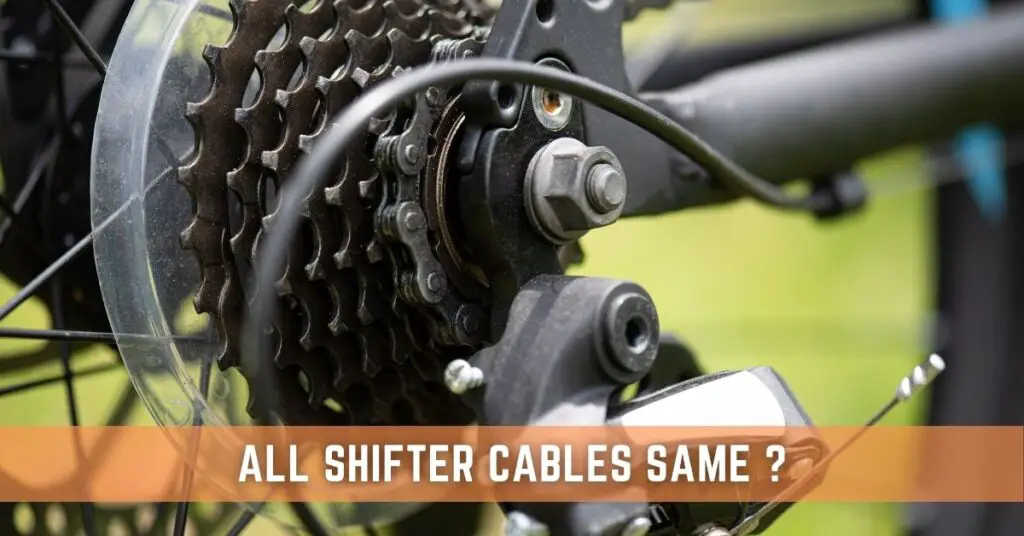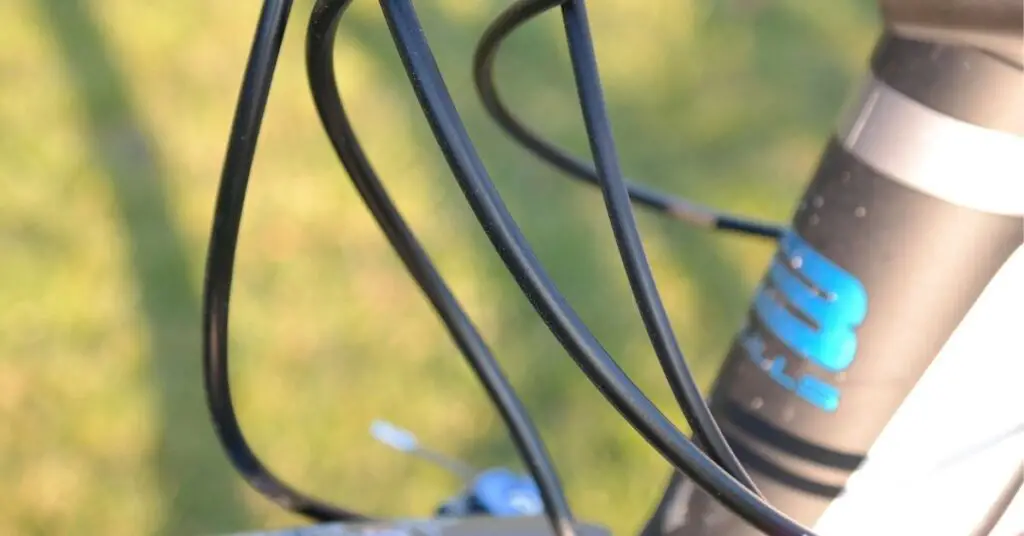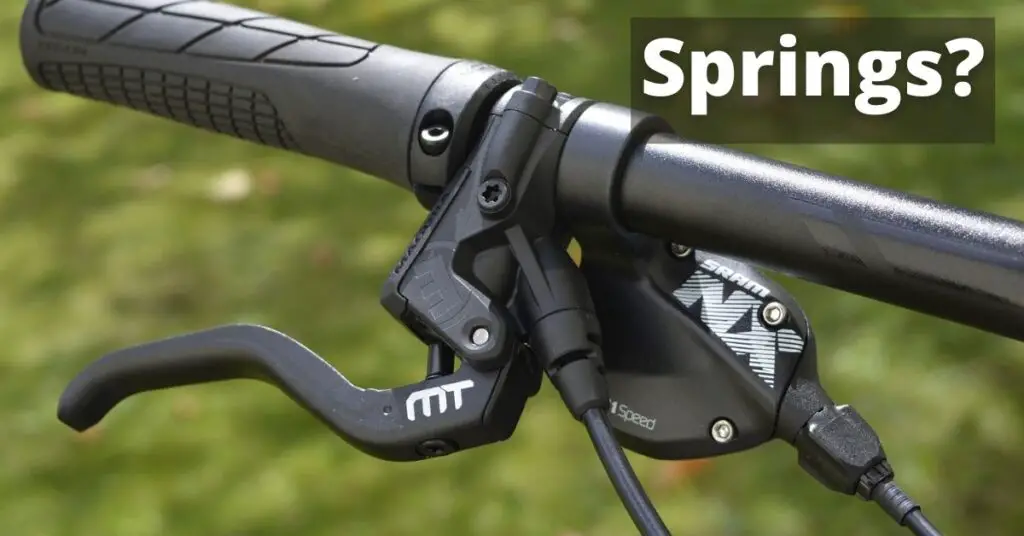The first sign of stiffness and other issues in your brake is if your brake lever is too loose or too tight.
An easy way to know that your brake lever is too tight or loose is by squeeze testing the lever. If you can barely squeeze the lever, the cable is too tight and if the lever easily touches the handlebars, then the cable is too loose. Your brake lever should ideally squeeze 3-4 cm before tightening up.
Most brake issues usually begin with stiffness so here is a guide to help you understand why your bike brake is stiff and what you can do to fix it.
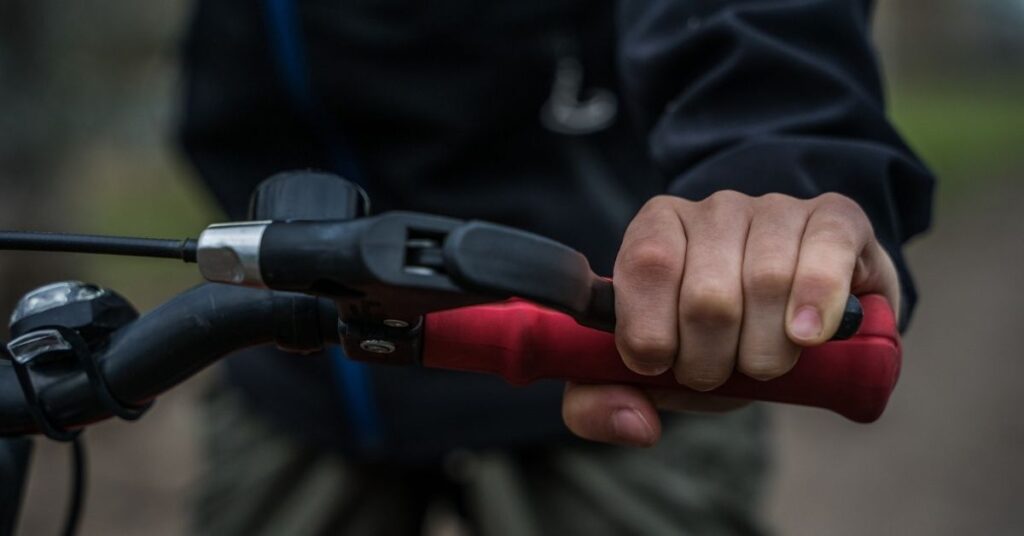
Why Is My Bike Brake Stiff?
First, you have to understand what type of brake your bicycle has so that you can decide the best approach to fixing the stiffness.
Let’s First Determine you Brake Type
The types of bicycle brakes include:
1- Rim Brake
Here cycle brake pads apply force to the rim of the wheel, which slows and stops the bike.
It is activated by a handlebar lever and although it is cost-effective and easy to maintain, it requires regular maintenance.
Some types of rim brakes include caliper brakes (center-pull and side-pull), V-brake, U Brakes, cantilever brake, rod brake, delta brake, etc.
2- Disc Brake
This operates through a metal disc or rotor located on the hub of the wheel. The caliper of this type of brake has two brake pads that squeeze the rotor to slow and stop the bicycle.
It requires little maintenance and high brake control.
There are two main types; mechanical (which uses cables) and hydraulic (which uses hydraulic fluid in a sealed line).
It is commonly found in Hybrid and Mountain bikes.
3- Drum Brake
It works through the use of a lever on the handlebars. It uses cables and rods to slow down the wheels of the bicycle.
Drum brakes are low maintenance and common in Commuter and Utility bicycles.
Once you understand the type of brake your bicycle has, it is easier for you to identify the cause of stiffness in your brake and fix the issue.
5 Reasons for a Stiff Bike Brake
There are several reasons why the brake and levers of your bike are stiff, and these reasons cut across all the types of brakes.
Here are some of the possible causes…….
1- Poor Cable Routing
On a standard bicycle, proper cable routing is where your brake cable runs externally or internally through the bike frame to connect the brake levers to the gear mechanism.
Where the cable is not properly connected or there are kinks or twists in the flow, it affects the connection between the various parts connected.
This can be found even in new bicycles and can occur where the cable linking the lever and brake machinery (such as the caliper) is too long.
2- Damaged Housing
Where the cable housing of your bicycle is rusty or damaged in some manner, it affects the ability of the cable to move freely, causing it to get frayed or stiff.
3- Jammed Levers
When your levers are stuck and jammed, it reduces the movement of the cables, brake, and other parts, causing them to stiffen up and difficult to move.
4- Friction in the Cables & Lever
This is a sign that the cable and its casing have corroded, it also shows that your brake lever may be damaged. Flexing the brakes with your hand will help you feel how much friction is in there.
5- Adjustment/Lubrication Issues
The cables might not be properly placed which affects the transmission from lever to brake.
Poor lubrication could also make the lever, cables, and brake parts dry, corroded, and hard to function.
Effect of Stiff Brakes on Bicycle Performance and Experience
Effective brakes are very important for safe cycling. Having a stiff brake system means that your brake lever is not connecting with your brake system properly. This means that your bicycle cannot slow down or stop at your command, which is the key ability of any bicycle.
1- Accidents & Injuries
A stiff brake massively increases the chances of your bicycle getting involved in an accident and of you getting hurt or gravely injured. Brakes help you to slow down in traffic, maneuver crowds or busy roads.
By using a bike with a stiff brake system, you are not only putting yourself at risk but also increasing the risk of innocent people getting hurt if your bicycle hits them or gets involved in a major accident.
2- Wear & Tear
It is possible that by delaying brake action, your bicycle puts an extra burden on other parts. This increases the risk of wear and tear of other parts of your bicycle.
3- Puts Speed Restrictions on You
Your smooth cycling experience is damaged as you have to put extra energy and effort into slowing and stopping your bike, it reduces the speed at which you can cycle, forces you to use your legs or other methods to slow down, wastes your time, and generally turns your amazing cycling experience into a stressful burden.
It might seem like a small aspect of cycling but is actually very important and key to maintaining your bicycle and your cycling experience.
How to Fix the Stiffness in Your Brake
It’s important that you know basic methods of determining where the stiffness is originating from in your brake system and how to repair the damaged or affected parts so that you have proper and full control over the bike brakes.
So here is some repair advice……..
STEP 1: Carefully check the rear brake and compare it to the front. Squeeze the brake lever on the handlebar and check if the cable goes limp. If yes, then the brake lever itself is fine.
If not, then the lever may be jammed or damaged. Inspect the route of the cable and check for any damage in the cable housing. It may be rusty which can jam the cables.
STEP 2: Isolate the calipers, levers, and cables. Test each part to determine where the problem is, as there might be friction in any of them.
Detach the cable from the caliper, squeeze the brake lever to check lever movement, and slide the cable back and forth to determine how easily the cable passes through the housing.
STEP 3: The best recommendation is to replace the cables. They might be frayed, damaged, and unsuitable for use also.
STEP 4: If the cables are still in good condition, you must lubricate them thoroughly before feeding them back through the housing.
Before returning the cables to the housing and bicycle, you should rub off any corrosion, lubricate and also lubricate the housing.
STEP 5: While the cable is being cleaned and lubricated, you should flex the brakes by hand to determine how much friction it has. Lubricate all the pivot points of the brake to ease up the stiffness of the parts.
Many brakes allow you to adjust the tension of the pivot point through a bolt or set screw, so this is something you should try to do.
STEP 6: For cantilever brakes, you should also ensure to lubricate the posts where they mount to the frame of your bicycle.
For hydraulic levers, the best option is to remove the master cylinder piston. Use fine Emery paper to scrub off the material of the edge very gently to reduce the diameter.
In order to remove the master cylinder piston properly, you must remove the brake lever, drain the brake fluid from the lever, disassemble the lever, and then remove the piston and its rubber seals. Sand it gently until it can slide freely in the cylinder.
Clean everything thoroughly before re-assembling and re-bleeding the brakes.
How to Prevent Your Brake from Being Stiff
Now that you know the possible causes of your stiff brake and lever, and how to fix the stiffness, here is some advice on how to maintain your brake system:
1- You should always ensure that your brake system is properly lubricated; cables, levers, spokes, cable housing, etc
2- Check your brake pads constantly. They directly affect how effective your brake system is and are easily susceptible to wear and tear so they should be replaced every now and then.
3- Always protect your rotors from contamination and make sure to clean them frequently with a disc brake cleaner. Replace them when there is any sign of contamination.
4- Where your brakes are rubbing and making squeaky, disturbing noises, this can lead to wear and tear of your brake pads and rotor.
This is usually caused by bad caliper alignment and can be easily fixed by properly aligning the calipers of your brake system.
Conclusion
The most common thing people do when they experience stiffness in their brake is to return to the manufacturers or the shop, and while it is good to leave repair issues to professionals, you could also save yourself a lot of time, energy, and money by resolving some issues yourself, especially if it is something simple like a stiff brake or lever.
By understanding the type of brake system of your bike and following the recommendations to resolve the stiffness issues, you learn a lot more about your bicycle, how to make simple repairs to your brake system, and keep your bicycle in a good, efficient condition.

